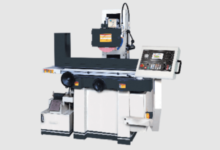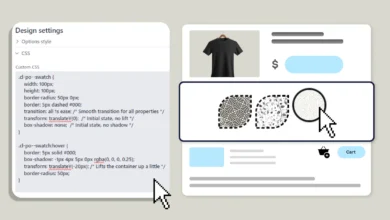How to Calculate SDE for Small Business Valuation

Understanding Small Business Valuation
Figuring out what your small business is actually worth can feel like a puzzle. It’s not just about the money you see in the bank account. There are a lot of moving parts that go into a business valuation. Knowing this number is pretty important, whether you’re thinking about selling, bringing on a partner, or even just planning for the future. It gives you a solid idea of your business’s health and its place in the market.
Why Valuation Matters for Your Business
So, why bother with a valuation? Well, it’s not just for when you’re ready to sell. Think about it: if you want to get a loan, a clear valuation can show lenders your business’s stability. If you’re looking to expand or buy another company, knowing your own worth helps you negotiate better. Even for estate planning, having a valuation is key. It provides a clear picture of your assets.
Key Factors Influencing Business Value
Several things can bump your business’s value up or down. It’s not just one thing. Here are some of the big ones:
- Financial Performance: How much money has the business been making, and is it consistent?
- Market Conditions: What’s happening in your industry right now? Is it a good time to sell or buy?
- Assets: What does the business own? This includes physical things like equipment and property, but also intangible things like brand reputation.
- Customer Base: Do you have loyal customers, or is it a constant struggle to find new ones?
- Management Team: Is the business reliant on just one person, or is there a solid team in place?
Sometimes, the perceived value of a business can be just as important as the numbers on paper. How people see your brand and its potential plays a big role.
When you’re looking at selling, you might think about working with a business broker. Companies like the First Choice Business Broker Franchise specialize in this. They understand the market and can help you get a realistic valuation. It’s a bit like hiring a real estate agent for your house, but for your business. They can help connect you with potential buyers too. It’s good to know there are options out there, especially if you’re not familiar with the whole business brokerage franchise world.
The Role of SDE in Valuation
When you’re looking to sell your small business, or even just get a handle on its worth, you’ll hear a lot about SDE. It’s a pretty common term in the business valuation world, and for good reason. It’s basically a way to see how much money the business really makes for its owner, after you account for all the stuff the owner can control or choose to spend on.
Defining Seller’s Discretionary Earnings
So, what exactly is Seller’s Discretionary Earnings, or SDE? Think of it as the total financial benefit a single owner-operator gets from a business. It’s not just the profit on paper; it’s the profit plus all the extra perks and payments the owner takes out. This includes their salary, any benefits they give themselves (like health insurance or a car), and even personal expenses they run through the business. It’s the money that’s available to a new owner who wants to run the business themselves, without necessarily keeping all the same perks the previous owner had.
How SDE Differs from Net Income
Net income, the number you see at the bottom of your profit and loss statement, is what’s left after all expenses, including taxes and interest. But SDE is different. It’s designed to show the earning potential for a new owner who might not have the same salary or benefits as the current owner. For example, a business might show a low net income because the owner pays themselves a huge salary. When calculating SDE, that high salary gets added back, because a new owner might not need to pay themselves that much to run the business. SDE gives a clearer picture of the cash flow available to a new owner.
Adjustments to Calculate True SDE
To get to the real SDE, you have to make some adjustments to the business’s reported profit. It’s like cleaning up the numbers to see the core earning power. Here’s a basic idea of what gets added back:
- Owner’s Salary and Benefits: This is usually the biggest one. If the owner pays themselves a salary that’s higher than what a hired manager would get, the difference is added back. Same goes for things like personal health insurance premiums, life insurance, or retirement contributions paid by the business for the owner.
- Discretionary Expenses: These are costs that benefit the owner personally but aren’t strictly necessary for the business to operate. Think of things like a company car used for personal trips, excessive travel and entertainment expenses, or even certain home office expenses that are more personal than business-related.
- One-Time or Non-Recurring Expenses: If the business had a big, unusual expense in a given year that won’t happen again, like a major lawsuit settlement or a one-off equipment repair, that gets added back too. It smooths out the earnings.
Calculating SDE isn’t just about adding numbers; it’s about understanding the true economic benefit the business provides to its owner. It requires a careful look at how the owner has been taking money out of the business and what a new owner would realistically need to spend.
Calculating Seller’s Discretionary Earnings
Calculating Seller’s Discretionary Earnings (SDE) is a big step in figuring out what your business is actually worth. It’s not just about looking at the bottom line on your tax return. Think of it as trying to see how much money a new owner could pull out of the business if they were running it themselves, without all the special perks the current owner might be getting.
Starting with Net Profit
So, where do you begin? Usually, you start with the business’s net profit. This is the number you find after all expenses, taxes, and depreciation have been subtracted. It’s the profit shown on your income statement. But, as we’ve talked about, this number doesn’t tell the whole story for a small business sale.
Adding Back Owner’s Salary and Benefits
This is where things get interesting. A small business owner often pays themselves a salary, and maybe gets other benefits like health insurance or a company car. When you’re valuing the business for a sale, you need to add these back. Why? Because a new owner might not take the same salary, or they might have different benefit needs. We’re trying to get to the true earning potential of the business itself.
Here’s a quick look at common add-backs:
- Owner’s Salary
- Owner’s Health Insurance Premiums
- Retirement Plan Contributions for Owner
- Life Insurance Premiums for Owner
- Company Vehicle Expenses (if used personally)
Accounting for Discretionary Expenses
Next, you look for what we call ‘discretionary expenses.’ These are costs that the current owner chose to incur, but a new owner might not. They aren’t strictly necessary for the business to operate. Think of things like:
- Excessive owner travel and entertainment
- Certain professional fees not directly tied to operations
- One-time or unusual expenses
- Personal expenses run through the business
It’s important to be honest here. You can’t just invent expenses. The goal is to adjust the net profit to reflect what a typical owner would earn and spend, making the business more comparable to others in the market. It’s a bit of an art and a science, really.
Applying Valuation Multiples to SDE
So, you’ve figured out your Seller’s Discretionary Earnings (SDE). That’s a big step! But how do you turn that number into a business valuation? That’s where valuation multiples come in. Think of a multiple as a multiplier that you apply to your SDE to get a rough idea of what your business might be worth.
What is a Valuation Multiple?
A valuation multiple is essentially a ratio that compares a business’s value to a specific financial metric, most commonly its SDE. It’s a shorthand way to estimate value based on what similar businesses have sold for. For example, if businesses in your industry typically sell for 3 times their SDE, and your business has an SDE of $100,000, then a simple valuation might be $300,000.
Industry-Specific Multiples
This is where it gets interesting, and also a bit tricky. Multiples aren’t one-size-fits-all. They vary a lot depending on the industry you’re in. A profitable coffee shop might have a different multiple than a tech startup or a landscaping company. Why? Because the risks, growth potential, and stability of each industry are different.
Here’s a general idea, but remember these are just examples and can change:
| Industry Type | Typical SDE Multiple Range |
| Retail | 2.0x – 3.5x |
| Service Businesses | 2.5x – 4.0x |
| Manufacturing | 3.0x – 4.5x |
| Technology | 3.5x – 5.0x+ |
It’s important to look at multiples for businesses that are truly comparable to yours – similar size, location, and business model. A high multiple doesn’t automatically mean your business is worth more; it might just reflect a different market or a business with unique advantages.
Determining the Right Multiple for Your Business
Finding the right multiple for your specific business involves a few things:
- Research: Look at sales data for similar businesses. Business brokers and valuation professionals often have access to this information.
- Risk Assessment: Is your business stable with recurring revenue, or is it more volatile? Higher risk usually means a lower multiple.
- Growth Potential: Does your business have room to grow, or is it mature? Strong growth prospects can justify a higher multiple.
- Market Conditions: The overall economic climate and the demand for businesses like yours play a role.
Ultimately, the multiple you use is an estimate. It’s a starting point for negotiation and valuation, not a final, absolute number.
When to Seek Professional Valuation Assistance
While calculating Seller’s Discretionary Earnings (SDE) yourself can give you a ballpark figure, there comes a point where getting a professional valuation is a really smart move. Trying to do it all on your own can lead to mistakes, especially if you’re not familiar with all the ins and outs of business appraisal. It’s easy to miss things or misinterpret data, which could end up costing you money down the line.
Recognizing the Limits of Self-Valuation
Look, we all want to save a buck, right? But when it comes to something as important as valuing your business, cutting corners can backfire. You might be too close to the business to see it objectively. Maybe you’re overlooking certain expenses that should be added back, or perhaps you’re not quite sure how to properly adjust for things like owner perks or non-recurring costs. It’s like trying to diagnose a medical issue from a quick online search – you might get a general idea, but you’re probably not getting the full, accurate picture.
Benefits of Engaging a Business Broker
Business brokers deal with buying and selling businesses every single day. They’ve seen a lot of different types of companies and know what buyers are looking for. They can help you:
- Get a more accurate SDE calculation by knowing what adjustments are standard.
- Understand how your business stacks up against others in your industry.
- Market your business effectively to attract the right buyers.
- Negotiate a fair price based on solid valuation data.
Their experience can make a significant difference in the final sale price and the smoothness of the transaction.
Finding a Trusted Advisor like First Choice Business Broker Franchise
When you decide to bring in the pros, you want someone you can trust. A good business broker or valuation expert will be transparent about their process and fees. They’ll explain how they arrived at their valuation and be able to back it up with data. Look for advisors who have a good track record, especially in your industry. Franchises like First Choice Business Broker Franchise often have established systems and training, which can mean a more consistent and reliable valuation process. They can help you avoid common pitfalls and ensure your business is presented in the best possible light to potential buyers.
Factors Beyond SDE in Business Valuation
While Seller’s Discretionary Earnings (SDE) gives you a good snapshot of a business’s profitability from an owner’s perspective, it’s not the whole story when it comes to valuation. Think of it like this: SDE is a major ingredient, but you still need to consider the entire recipe and the kitchen it’s being made in. Several other elements play a big part in what a business is truly worth.
Assessing Market Conditions
Market conditions can really swing the value of a business. Is the industry growing, shrinking, or staying flat? What’s the demand like for the products or services your business offers? A business in a booming sector might fetch a higher price, even with similar SDE to a business in a declining market. You also have to look at the competition. Are there a lot of players, or is it a niche market? This all affects how attractive your business is to potential buyers.
Evaluating Business Assets and Liabilities
Beyond the day-to-day earnings, the actual stuff the business owns and owes matters. This includes things like:
- Tangible Assets: Physical items like equipment, inventory, buildings, and vehicles. Are they up-to-date and in good working order, or are they old and needing replacement?
- Intangible Assets: Things you can’t touch, like brand reputation, customer lists, patents, or proprietary software. These can be really significant.
- Liabilities: What debts does the business have? This could be loans, accounts payable, or deferred revenue. Buyers will factor these in, as they’ll likely have to take them on.
The condition and age of your assets, along with the amount of debt a business carries, directly impact its net worth and, consequently, its sale price. A business with a lot of old equipment and significant debt will likely be valued lower than a similar business with modern assets and little debt.
Future Growth Potential and Risk Assessment
What does the future look like for this business? A buyer isn’t just buying what it is today; they’re buying what it could be. This involves looking at:
- Growth Opportunities: Are there clear paths to increase revenue or profit? This could be expanding into new markets, introducing new products, or improving marketing.
- Customer Concentration: Does the business rely heavily on just a few big clients? If one of those clients leaves, it could be a big hit. Lower customer concentration generally means less risk.
- Management and Staff: Is the business dependent on the current owner, or is there a strong team in place that can run things smoothly after the sale? A business that can operate without the owner’s constant presence is usually more valuable.
- Economic and Industry Risks: What external factors could negatively impact the business? Think about changes in regulations, economic downturns, or new technologies that could disrupt the market.
Wrapping It Up
So, that’s the lowdown on figuring out your business’s SDE. It’s not rocket science, but it does take some careful looking at your numbers. You’ll want to make sure you’re adding back all those owner perks and personal expenses that don’t really count as business costs. Getting this right is a big deal when you’re thinking about selling or just want to know what your company is really worth. Take your time, check your work, and if you’re still unsure, maybe chat with an accountant. It’s better to be sure than sorry when it comes to your business’s value.
Frequently Asked Questions
What exactly is Seller’s Discretionary Earnings (SDE)?
Seller’s Discretionary Earnings, or SDE, is like the total profit a business owner can take home after paying all the regular business costs. It’s what’s left over for the owner’s pay, benefits, and any extra perks they give themselves, before figuring out the business’s sale price.
How is SDE different from regular net income?
Think of net income as just the leftover money after taxes and all business bills. SDE is different because it adds back things the owner might have paid themselves or spent on personal things through the business. It gives a clearer picture of the cash flow available to a new owner.
What steps are involved in calculating SDE?
You start with the business’s profit before taxes. Then, you add back the owner’s salary and any benefits they get, like health insurance or a company car. You also add back any expenses that were just for the owner’s personal use, like a fancy vacation paid for by the business.
What is a valuation multiple and how is it used?
A valuation multiple is like a multiplier. You take the SDE and multiply it by a number that fits the business’s industry and how well it’s doing. This helps estimate the total worth of the business.
Why do different businesses have different valuation multiples?
Not all businesses are valued the same way. Some industries have higher or lower multiples based on how risky they are, how much they grow, and what buyers are willing to pay. A local bakery might have a different multiple than a tech startup.
Are there other things that affect a business’s value besides SDE?
While SDE is super important, it’s not the only thing. You also need to look at how the economy is doing, if the business owns valuable stuff like buildings or equipment, and if the business has a good chance to grow in the future. Also, how risky is it? These all play a part in the final price.







